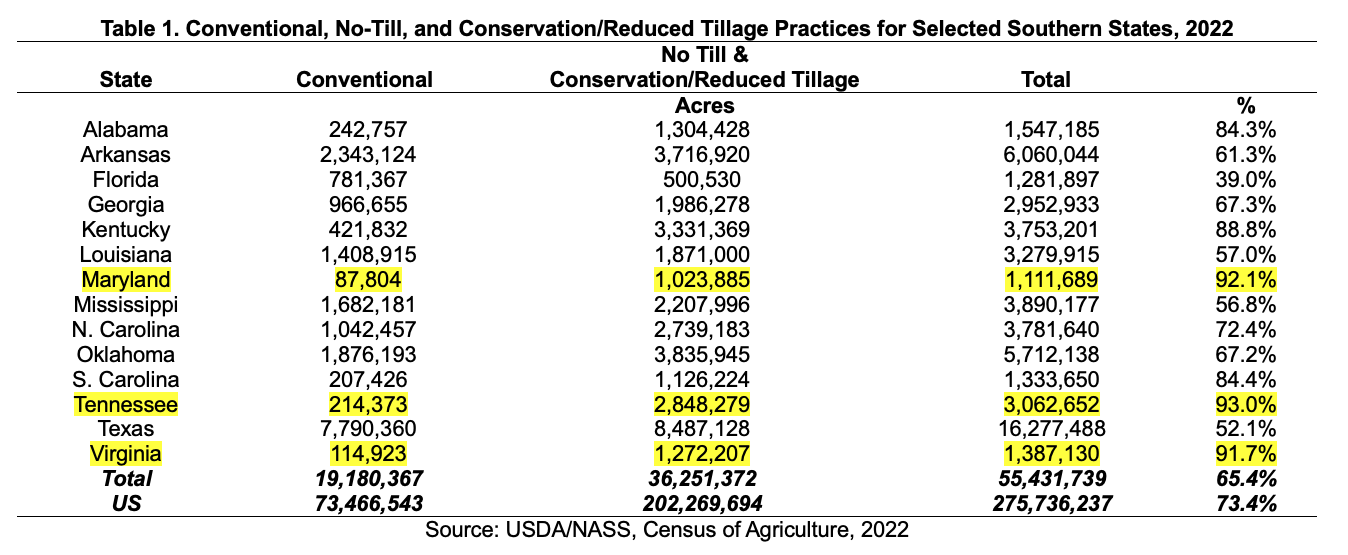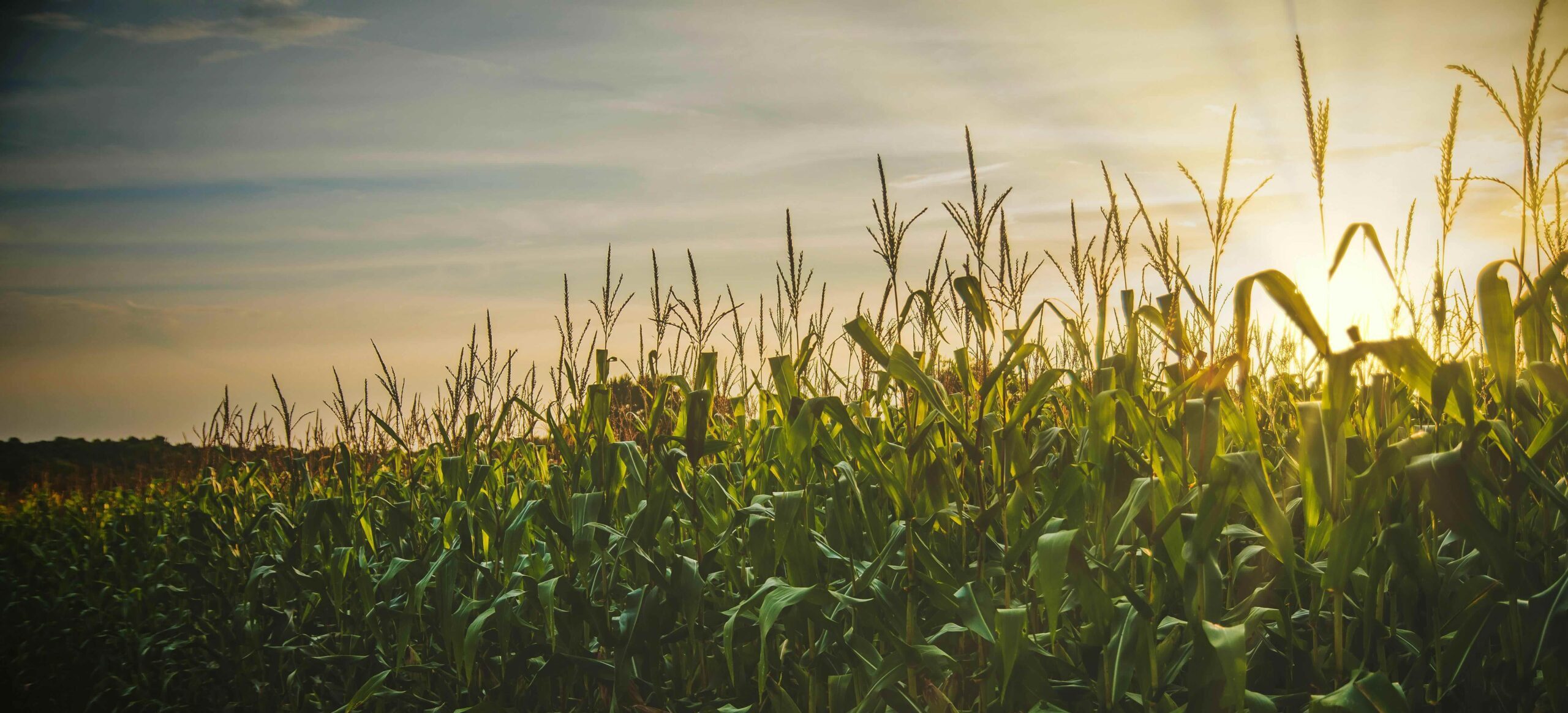Based on the USDA’s most recent Census of Agriculture 2022 data for tillage practices, no-till, and conservation/reduced tillage acres comprise 65.4% of the tillage practices for selected southern states (Table 1). For the US, the no-till and conservation/reduced tillage rate is 73.4%. No-till is defined as leaving 50% or more of the soil surface undisturbed from harvest to planting. Whereas conservation and reduced tillage is defined as leaving 30% or more surface undisturbed and may involve chisel plows or light disking (Rust and Williams, 2010). As of 2022, three southern states have the highest rate of no-till and conservation/reduced tillage in the U.S.: Tennessee (93%), Maryland (92.1%), and Virginia (91.7%). The three southern states with the smallest adoption of no-till and conservation/ reduced tillage practices compared to all tillage practices were Florida (39%), Texas (52.1%), and Mississippi (56.8%).

Of interest would be the comparison of southern state’s adoption of these tillage practices over time, which are indicated in Figure 1. The figure displays the percentage change in no-till and conservation/reduced tillage acres at the county level from 2017 to 2022. Green shades indicate percentage decreases in these tillage practices whereas blue shades indicate an increase percentage wise.
Figure 1. 2017 to 2022 Percentage Change in No-Till and Reduced/Conservation Tillage Acres

The five southern states with the highest increase in acreage of cropland using no-till plus conservation/reduced tillage practices from 2017 to 2022 are Arkansas (17.6%), followed by Florida (15.3%), Texas (15.1%), Georgia (10.8%), and Alabama (10.7%). The states with the largest average increase in these tillage practices for the three census periods (2012, 2017, and 2022) were Florida (29.3%), Mississippi (20.6%), Arkansas (20.2%), Texas (17.1%), and Louisiana (16.4%).
This information helps us understand which regions within the South are adopting reduced and no-till practices and is also relevant as carbon markets expand. These practices can improve soil health by preserving soil structure, increasing water retention and organic matter. Additionally, they reduce soil erosion and lower greenhouse gas emissions by minimizing soil disturbance. However, given the cropping system, adopting no-till or reduced till may not make sense (e.g., peanut and rice production). Most importantly, the impact and profitability of no-till and reduced-till practices varies depending on the regions and crops involved, influencing adoption rates.
Reference
Rust, B. & J. Williams. 2010. USDA/ARS. “How Tillage Affects Soil Erosion and Runoff.” USDA/ARS Available at https://www.ars.usda.gov/ARSUserFiles/20740000/PublicResources/How%20Tillage% 20Affects%20Soil%20Erosion%20and%20Runoff.pdf.
Menard, R. Jamey, and Hence Duncan. “Digging into Dirt: Southern States Adoption of No-Till and Reduced Tillage Practices.” Southern Ag Today 4(31.3). July 31, 2024. Permalink


